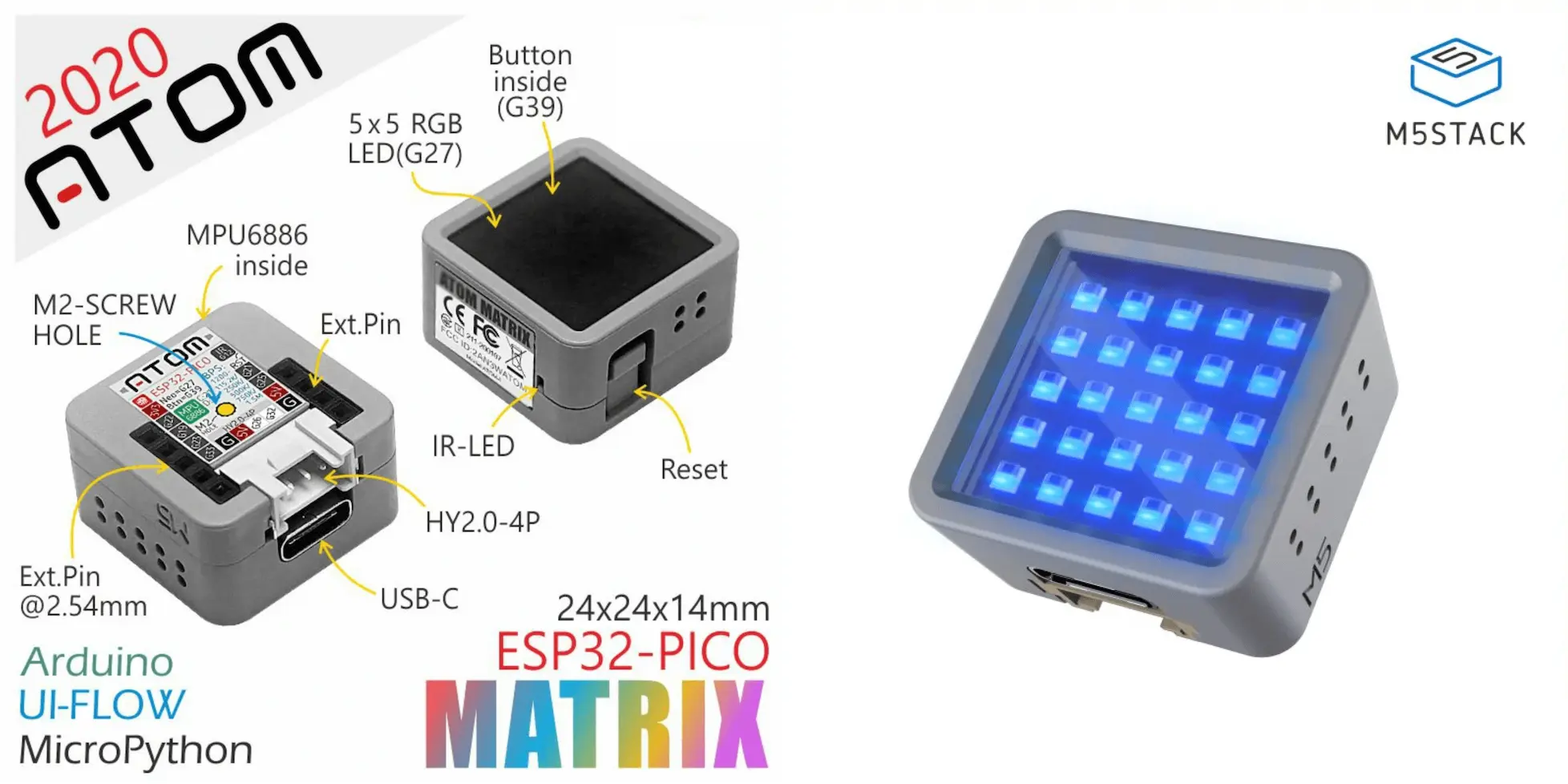The Atom Matrix is a tiny (24mm x 24mm x 14mm) ESP32 based device from M5Stack. For such a small thing at a nice price (around US$ 15 at the time of writing) it has a lot to offer. I’ve owned a couple of these devices for a year or so and hadn’t had time to use them for anything, so I decided to get them out, install MicroPython on them, and see how easy or not it would be to use all of the features from the MicroPython language.
I thought I’d undertake this project as a series of live streams where I’d get to test out the zoom on my new overhead second camera. I didn’t live code everything, but had some material and resources prepared beforehand so we could focus on getting stuff done rather than potentially tedious debugging. I made three streams for this project that are all linked below.
Here’s what the Atom Matrix looks like, including an overview of its features:

The M5Stack range of devices and accessories is available from all the usual maker places:
- Direct from M5Stack.
- Pimoroni (UK based, worldwide shipping).
- The Pi Hut (UK based, worldwide shipping).
- Adafruit (US based, worldwide shipping).
Here are the three videos that I made covering how to use the features of this device from MicroPython. In the first episode, I showed how to install the MicroPython runtime, connect to a MicroPython REPL on the device and work with the LED matrix and button. Then, I wrote code to connect to a WiFi network and retrieve the current Cheerlights color using MQTT.
Code for episode one is in the first_livestream folder on GitHub.
For the second episode I walked through a small pull request that I made to the MicroPython helper class for the Atom Matrix and we learned about how to operate the accelerometer. You’ll find the code in the second-livestream folder on GitHub.
Your support helps to fund future projects!
In episode three I demonstrated how to use the Grove connector on the device to connect and work with three different types of sensor. These were a light sensor, a DHT11 temperature/humidity sensor and a PIR motion detector. The MicroPython code to accompany this episode is in the third-livestream folder on GitHub.
If you want to try this out for yourself or study the code, I’ve made it available freely on GitHub. If you do anything with it, or are building similar projects I’d love to see what you’re up to. (Contact me here).
Main photograph from pxhere.com.
 Simon Prickett
Simon Prickett

 Completing the PiHut Maker Advent Calendar
Completing the PiHut Maker Advent Calendar